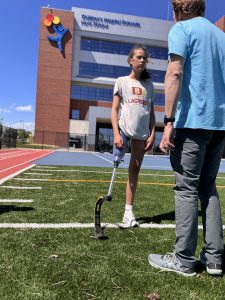Environmental Advisory Board advocates for ambitious emissions reduction goals
Though challenges lie ahead, there is greater cost to not setting those goals

By 2022, Snowmass Village officials will likely know whether the town met its “20 by 20” goal to reduce carbon emissions and solid waste diversion by 20% from a 2009 baseline.
In the meantime, the Environmental Advisory Board recommends that the town aim for far more ambitious goals in the next decade: an absolute emissions reduction of 62.5% by 2030 and participation in an international effort to near zero-emissions status by 2050, members said during a Town Council meeting Sept. 20.
Those numbers stem from a “Race to Zero” initiative led by ICLEI (pronounced ik-ley), a sustainability-minded international coalition of local governments. The coalition calculated a “science-based target” specific to the community of Snowmass Village, hence that 62.5% number, according to town documents.
So far, 31 communities have joined the effort; the coalition hopes to land 150 on the roster, said Environmental Advisory Board chair Phi Filerman.
Reaching that goal won’t be easy, and it won’t be cheap, either; concurrent initiatives like Holy Cross Energy’s commitment to use 100% renewable energy sources by 2030 will bring the town closer to the finish line, but the effort would still likely be “one of the largest activations of resources” for Snowmass Village over the next 10 years, said Environmental Advisory Board member Andew Wickes.
The town also could choose to align with state goals of 50% emissions reductions by 2030, but that too would be “quite a large feat,” Wickes said.
“We all believe in the need to do this, but all the easy tasks have been accomplished,” Councilman Tom Fridstein said.
It’s going to call for more than just a few extra solar panels to come within spitting distance of those emissions reduction goals, with “huge changes — changes in lifestyle, changes in economics,” Fridstein noted.
Councilman Tom Goode, playing the “devil’s advocate,” noted the many challenges ahead, namely in convincing homeowners and business owners to make changes that (at least in the near future) may be more costly and may take up more square footage to reach a lower emissions point.

As the town’s representative for the Community Office for Resource Efficiency, Goode has long been in favor of sustainability efforts; it’s just that he also sees hurdles in convincing some members of the public to get behind such efforts given the costs associated with making changes.
“I’m a proponent of this, I just think it’s not going to be that easy. … There’s a lot further we have to go to make our goals, to be realistic,” Goode said.
Goode, who runs his own plumbing and heating company, knows well the costs of opting for home heating and snowmelt options that may be environmentally friendly but aren’t necessarily space efficient or cost effective.
Even among those homeowners with 15,000-square-foot properties, finances are a factor: “They need that carrot in front of them,” he said. Incentives from federal and state sources could help on that front.
“There may need to be a stick, too,” Filerman suggested, with incentives for early adopters and penalties down the line.
Technology, too, has a ways to go, Goode said.
But setting the goal now can help put the pressure on technology businesses to accelerate innovation and development to meet the demands of sustainability-minded consumers, board member Joseph Goodman said.
“The thing that enables it to speed on and faster and faster every year … is towns like us saying we’re making a commitment, we’re drawing a line in the sand,” Goodman said.
And consider the costs of not setting such ambitious goals, Filerman suggested: Who needs snowmelt if there’s no snow to melt due to climate change?
“The other flipside of that is, what’s the downside of not doing it?” she said. The financial investment now also is an investment in ensuring that children and grandchildren can still ski in a decade or two down the line.
That’s an investment Goode and the rest of council could get behind: “What have we got to lose?” Goode said.
Mayor Bill Madsen shared the sentiment: It’s worth trying for the 62.5% reduction goal even with the challenges ahead, he said. Council directed staff to prepare a resolution for the 62.5% emissions reduction goal at the Sept. 21 meeting; members could vote to adopt it at a future meeting.
“I do think that there’s an advantage to Snowmass Village to be an early adopter,” Madsen said.
One of those advantages is the chance to be at the forefront of sustainability, Filerman noted. Setting the ICLEI-recommended goal is “a great opportunity for us to step into that leadership role” while participating in an international effort, she said.
“It will be a difference in terms of something that we can rally around,” Filerman said.
Aspen makes improvements to Glory Hole Park
The City of Aspen is undertaking a three-week project to enhance pedestrian safety and accessibility at Glory Hole Park.









